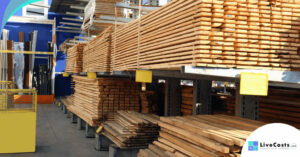A purchase order is a must for business management. It is a document that confirms an order for construction materials, sent from a buyer to a material supplier, equipment renter or subcontractor. When a purchase order is accepted, it sets basic terms between the parties such as what is being ordered and an agreed price for the transaction at a later date. A purchase order might be followed up with a written contract that further clarifies the relationship and expectations of the agreement. Sounds like a lot of work, so what are the benefits?
Will it help Construction Project Management?
Many organisations forego purchase orders because they perceive the paperwork to be a hassle that slows things down, or simply because they already have a working relationship with their suppliers.
When businesses start small they tend to have an organic purchasing process. Over time, however, that process changes as companies develop relationships with their suppliers. Once a company grows and the purchasing demands become more specific, urgent, and/or complex, communication challenges
can arise if a purchase order isn’t used.
Forms a record of an order
Purchase orders are a great way to track a record of orders in the case of a dispute at a later date. A good purchase order will contain:
- Description of the product or materials
- Quantity
- Price
- Payment terms
- Shipment method/dates
- Order reference number
Consider purchase orders as a written trail of breadcrumbs. We have all been there when the delivery comes in, and the materials aren’t what was ordered. Without having a written document to fall back on as a reference, there’s no telling where things went wrong. With a clear purchase order in hand, it’s easy to show where the mistake was made.
Tracks committed costs
Without a system in place to track costs from start to finish, contractors run the risk of thinking a job is more profitable than it really is. Remember the situation of thinking that a project was very profitable? Only to receive an invoice a month later that brings that profit crashing down.
A good system of raising purchase orders show what invoices you are committed to paying whether it has left the bank or not. Just check them off as the invoices come in and this will allow you exactly whats coming. Overpaying suppliers or simply running out of cash, there are many construction purchase order software out there that will manage the creation of purchase orders and match them to invoices when they arrive.
Controls agreed prices
When ordering from suppliers, especially those who provide us with credit, it can be tempting just to make the order without even asking how much you are paying for it. At the time of order, by documenting the amount you are agreeing to pay, it will encourage you to try and attain a better price or deal at every order. This also eliminates overpaying suppliers on individual orders at invoice time.
Tracks accountability
As companies grow, employees will generally be handed some responsibility for making orders from site. Having the ability to track the spend of the employee to the location can be very useful when multiple orders are being made. This also adds the ability to track internal fraud.
Validates deliveries
Often in construction, the person ordering the material may not be the same person that accepts it on site. This creates a difficulty when saying what was ordered does not match what has arrived. With a purchase order validated on site, the person in control of the ordering can be notified of any shortfalls or delay immediately.
Prevents duplicate payments
If a simple matching system is implemented, duplicate payment can be avoided. Invoices are checked against the original purchase order. One invoice to one purchase order will prevent duplicates.
Why is a purchase order system for builders important?
With the introduction of such a system to manage these processes, purchase orders do not need to be a bunch of extra paperwork, but a method of saving on time and errors. LiveCosts has been built with the purchase order at the heart of the product for all the above benefits.



